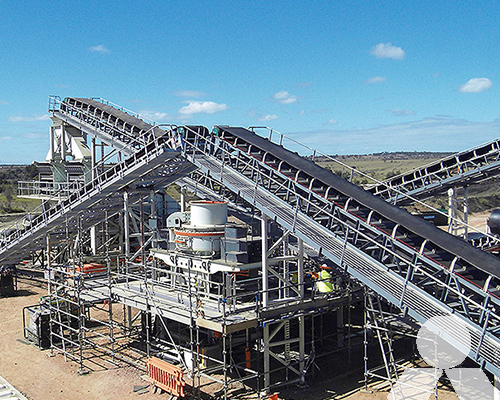what are the statutory documents for crushing & mining
The statutory documents required for crushing and mining operations can vary depending on the country, state, and local regulations. However, there are some common documents that are typically required in many jurisdictions to ensure compliance with environmental, safety, and legal requirements. Here are some of the key statutory documents that may be required for crushing and mining operations:

- Mining Lease or Permit: This is a fundamental document that grants the legal right to conduct mining activities in a specific area. The type of permit or lease required can vary by location and the type of minerals being mined.
- Environmental Impact Assessment (EIA) Report: An EIA is often required to assess the potential environmental impacts of mining and crushing activities. This document outlines the environmental consequences and mitigation measures.
- Mining Plan: A mining plan provides details on the proposed mining operations, including the methods, equipment, and schedules. It also often includes safety measures and plans for land reclamation.
- Safety Plan: A safety plan is crucial to ensure the safety of workers and the surrounding community. It outlines safety procedures, emergency response plans, and measures to prevent accidents.
- Water Management Plan: Mining and crushing operations often require water for various purposes. A water management plan may be required to address water usage, conservation, and the prevention of water pollution.
- Dust and Air Quality Management Plan: To mitigate the impact of dust emissions on air quality, a plan may be required to control dust generated during crushing and mining activities.
- Reclamation Plan: This plan outlines how the land will be rehabilitated and restored after mining operations have ceased. It includes landscaping, soil stabilization, and the establishment of vegetation.
- Community Engagement and Social Responsibility Plan: Some jurisdictions may require mining companies to engage with local communities and provide social benefits. This plan demonstrates how the company intends to do so.
- Permitting and Licensing Documents: Various permits and licenses may be required, such as blasting permits, water discharge permits, and air quality permits, depending on the specific activities involved.
- Financial Assurance: Many jurisdictions require mining companies to provide financial assurance to cover the costs of reclamation and environmental cleanup in case the company becomes insolvent or abandons the site.
- Health and Safety Compliance: Compliance with health and safety regulations is critical. This may include documentation of safety training, equipment inspections, and accident reporting.
- Environmental Monitoring Reports: Regular reports on environmental conditions, such as water quality and air emissions, may be required to demonstrate compliance with regulations.
- Government Inspections and Reports: Government agencies may conduct inspections and require various reports to ensure that the mining and crushing operations are in compliance with applicable laws.
It’s essential to consult with local regulatory authorities and legal experts to determine the specific statutory documents and requirements that apply to your crushing and mining operations in your particular location. Non-compliance with these regulations can result in fines, legal issues, and the suspension of mining activities.









